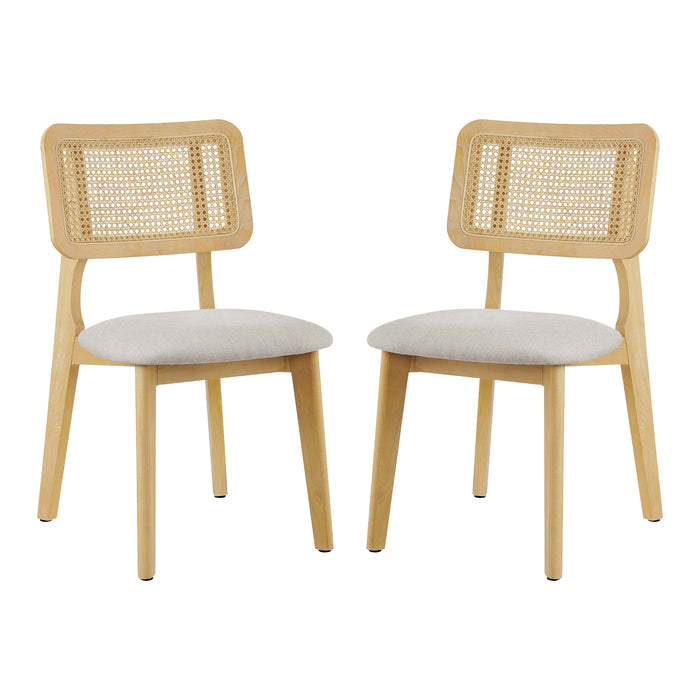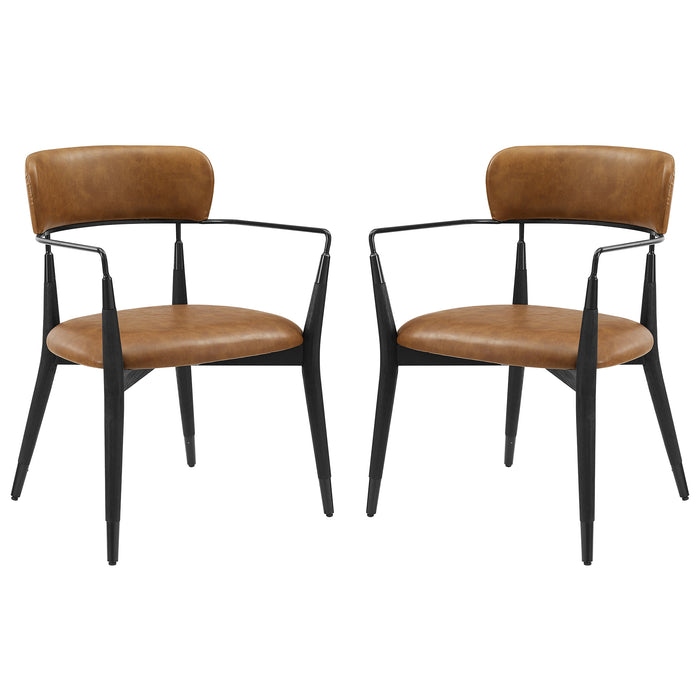Your dining room is more than just a place to eat. It's an integral space in your home to come together with friends and family, savour delectable dishes, and engage in meaningful conversations. When deciding on the arrangement of your dining room, a critical factor to consider is how much space you should apportion between your chairs and the wall. In this article, we'll explore the ideal space to leave between your dining chairs and the wall to create a functional and stylish dining area.
|
Contents[hide]
|
How much Space Should there be Between your Dining Chair and the Wall
1. Consider the Size of Your Dining Chairs
When planning your dining room, consider the size of your chairs before deciding how much space to leave between them and the wall. This way, you'll ensure enough legroom is available while leaving ample room along the wall! Dining chair sizes range from standard, oversized, and petite; accounting for these factors will help you decide on an appropriate spacing.
2. Leave at Least 24 Inches Between the Chair and the Wall
Leave 24-30 inches of space between standard-sized chairs and the wall to allow your guests to dine in comfort. However, if your dining furniture is oversized or has tall backs, it's best to keep 36 inches of distance between each chair and the wall so they can move freely around without obstructions.
For the most comfortable dining experience, leaving a minimum of 24 inches between your high-back dining chair and any nearby walls is ideal. This additional space will allow guests to scoot their chairs back without disturbing the wall and open a pathway behind each seated individual. Although this is a sufficient distance for guests to easily slide in and out of their seats if you have the space, we highly recommend providing at least 36 inches or more-your guests will truly thank you.
Allow a sufficient distance between your modern dining chairs and the wall to ensure comfort for your visitors and for other reasons. By leaving enough room, you can prevent damage to your walls caused by chair backs rubbing against them; this may include scratches, scuffs, or even indentations over time. Leave enough space between furniture pieces to ensure your walls look pristine and that cleaning is as easy as possible. It will prevent any potential damage and make it simpler to move around chairs or other items to thoroughly clean up dust, dirt, or anything else on the floor and wall surfaces.
3. Consider the Shape of Your Dining Table
When designing the optimal dining area, it is critical to consider how much space should be left between your chairs and the wall. It will differ depending on the shape of your dining table - a round table needs more room around its circumference than an elliptical one would require. Therefore, make sure that you consider both factors when deciding upon suitable spacing!
Make sure to give your rectangular tables ample room with 36 inches of clearance from any walls for chairs to tuck in on the long side. Make space for guests along all four sides for square tables by giving a minimum 24-30 inch gap between it and the wall. If you're setting up a round table, it's necessary to leave at least 24-30 inches of space between the wall and the dining furniture, making sure there is plenty of room for chairs on all sides.


4. Think About Traffic Flow
In addition, it's critical to contemplate traffic flow. Ensure adequate space in the dining room so your guests feel free from being stuffed up and constrained while they move around. If you have a narrow dining room, ensure that more open area exists between chairs and walls to craft a clear pathway for visitors who are walking by. A chaotic or tight dining room will make your attendees uncomfortable and can destroy their overall eating experience.
5. Measure your dining room
Before organizing your dining room, measuring the area and determining your available space is wise. That way, you can arrange the furniture in a manner that optimizes the amount of room for both seating and foot traffic! With those measurements, placing your table and chairs becomes an effortless decision. Ensuring that you measure the square footage of your space and account for any doors, windows, or furniture present will allow you to create a stylish yet practical dining area. Doing this ahead of time ensures an efficient setup with no last-minute adjustments needed!
When deciding how much space you should leave between your modern dining chair and the wall, it's important to consider the size of your dining room. If you have a more compact area for entertaining, then adjusting this gap may be necessary to maximize seating potential.
Let's say you have a limited-size dining room. This way, your space usage is optimized while presenting an aesthetic appeal! Nevertheless, consider that limited space may make it hard for guests to shift their chairs easily.
Related Reading: How to Choose Your Dining Chair Color?
6. Consider the Purpose of Your Dining Room
Last but not least, the usage of your dining area will also dictate how much space you need to place between your chairs and the wall. If it's usually used for more formal gatherings, leaving a generous amount of room is ideal, as this helps create an inviting yet grand atmosphere.
Conversely, if you intend to use your dining room for more relaxed meals with family or friends, consider leaving a smaller gap between the chairs and the wall. This will cultivate an inviting atmosphere of closeness and comfort. Ultimately, the distance between your dining chairs and the wall should be based on what suits you best and why you use your dining area.
We recommend:
Final Thoughts
Constructing a pleasant and useful dining room requires thoughtful consideration of the space between your chairs and wall. For a successful dining experience, you must ensure that you have created sufficient space for your guests to feel relaxed and enjoy their time. Consider the size and style of your chairs, the shape of your table, and the traffic flow in your dining room when designing a stylish yet comfortable dining area for your guests. Following these simple guidelines, you can create an inviting atmosphere that everyone can enjoy!
FAQs
- To allow guests to move freely without obstructions
- To prevent damage to the walls caused by chair backs rubbing against them
- To make cleaning easier




